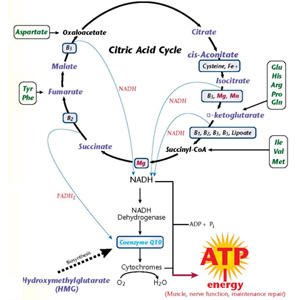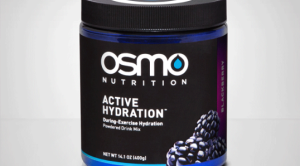
Deadspin featured a mostly fun but partly serious and thoroughly entertaining piece in exercise-induced cramping, prompted by LeBron James’s muscular malfunction during one of the recent NBA playoff games. The piece was called Everything You Know About Cramps Is Wrong, And Gatorade Is Full Of Shit. I admit a vicarious schadenfreudish peace washed over me as I read about a corporate titan brought low. (We had a 52-post thread on LeBron’s cramps.)
But in Gatorade’s defense, it’s caught in a bind. It cannot sell the perfect sports drink for exercise in convenience stores. That drink would not taste good enough to be sold at retail to those reaching for a sports drink to wash down Spicy Nacho Doritos (cornerstone of the lunch of champions – the former cornerstone, ideally).
Some months back I was rounding into pretty good running shape. Then, 4 miles into an 8 mile loop, my calf seized. And I mean exactly 4 miles in, so that I had to get back exactly 4 miles on that calf, which did the calf no good. I tried everything. Stretching. Walking. Waiting it out. That camp would not unseize. Further, for the next 6 weeks I was “crampy.” I cramped swimming. I cramped walking around the house. I woke up crampy. It was not just in my calf, I was crampy systemically.
Cramps are a mystery, and I can’t prove it but I suspect cramps are the proximate cause of a number of other injuries. I wonder whether a lot of trunk and torso related strains – high hamstring, psoas, hip flexors – might not occur because of a cramp during exercise that we play through, that spasm exerting extra tension on the connective tissue.
There are too many glib, single-etiology responses by those who think they have the answer to why we cramp. If you go on our reader forum cramping is caused by under-hydrating. No, it’s caused by over-hydrating. No, you cramped because you trained or raced beyond your capacity. No, cramping is mental.
How do we not cramp? “Train more, race smarter,” according to one Slowtwitcher. Compression gear. Salt tablets. Electrolyte replacement (no, not that brand, this brand!)
I’m sensitive to the argument that cramping occurs because my gaze, athletically, exceeded my grasp. I just didn’t pace correctly. Fine. I’m certain I’m guilty as charged. Circling back to my 8-mile run, however, this was a standard run. I’d done this same run a dozen times over the past 2 months, no problem, and, if it were a problem, why 4 miles in, when I was still relatively fresh? Further I wasn’t putting out any effort when sleeping, so, why was I waking up crampy? And why was this crampiness systemic, rather than specific to the muscles I’d been using?
The only logical interpretation is that I lacked something, that whatever it was, magnesium, calcium, the “low fuel” light on the dashboard only registered when I got that stubborn cramp.
It seemed to me that two things might be happening. First, I might just not be getting enough of something. Second, that something else I’m doing might be blocking the availability of a required substance, or increasing that substance’s evacuation. I’m not an alcohol drinker, but I am a coffee drinker. Many studies over decades have demonstrated that caffeine increases urinary excretion of Ca and Mg in the hours following caffeine intake, not just because of a diuretic response, but because caffeine inhibits the resorption of these electrolytes.
I began to suspect magnesium, because this is the one electrolyte that seems not to occur in a lot of what I normally eat (very little magnesium in Spicy Nacho Doritos).
Two more things to mention. I have in the past had some heart arrhythmia, specifically atrial fibrillation, and this is the reason I pretty much stopped all alcohol (it was a trigger for me). Notable, however, is that magnesium supplementation was not found the decrease A-Fib (Frick, et al. The effect of oral magnesium, alone or as an adjuvant to sotalol, after cardioversion in patients with persistent atrial fibrillation. Eur Heart J. 2000).
Finally, I’m 57 years old. Age seems to be a factor in cramping. At least in calf cramping. We have a large cohort of readers that report this, and we’ve identified, named and written extensively over the past 15 years about what we call “Mad Calf Disease,” specifically targeting men over 40 in, at least anecdotally, much higher numbers than other cohorts.

My best guess was a deficiency. However, a number of studies have failed to demonstrate that magnesium (for one) supplementation increases performance. Terblanche, Noakes, et al, their 1992 paper says it all in the title: Failure of magnesium supplementation to influence marathon running performance or recovery in magnesium-replete subjects. (Int J Sports Nutr). But a year later Dragani, et al, published: Clinical, haematological and neurophysical evidence of muscle damage from magnesium deficiency in athletes: a case report. In: Golf (Magnesium Research. London: John Libbey Company, 1993).
In 2010 it was found that magnesium supplementation raised glucose levels and attenuated lactate levels during swimming. In gerbils. (Shiu-Min Cheng, et al, Eur J. Applied P). I didn’t know gerbils could swim. Apparently so.
Buchman, et al, found that “Serum and urinary magnesium concentrations decrease during endurance running, consistent with the possibility of magnesium deficiency” in “The effect of a marathon run on plasma and urine mineral and metal concentrations” (J Am Coll Nutr. 1998 Apr).
It seemed to me, reading these and other papers, that supplementation does not help you if you are not magnesium deficient. It only helps if you are already near or at the border of a deficiency.
There is a broad range of thought on what constitutes an appropriate amount of magnesium. Much of the literature has coalesced around 6mg/kg per day, which seems pretty high, but that’s a number that I keep reading. Further, it’s been suggested in the literature that athletes who train like we do bump this up by, say, 15 or 20 percent, not only because of the increased utilization of magnesium but because it’s present in sweat. Also, the FDA and others suggest upping Magnesium intake as you age. All this would put me at or near 600mg/day, much higher than the typical minimum daily requirements, and all this probably assumes that I’m not cannibalizing or sabotaging that intake through bad habits like too much coffee.
How does this comport with typical daily intakes? A large cohort in France, in a study done about a decade ago, showed a mean magnesium intake of 369 and 280mg/day, respectively, for men and women. In an “Update on the relationship between magnesium and exercise” (Nielsen, Kukaski, USDA, Magnesium Research. Volume 19, Number 3, 180-9, September 2006), “Based on dietary surveys and recent human experiments, a magnesium intake less than 260 mg/day for male and 220 mg/day for female athletes may result in a magnesium-deficient status. Marginal magnesium deficiency has been shown to impair performance and amplify the negative consequences of strenuous exercise. Thus, magnesium supplementation or increased dietary intake of magnesium could be beneficial to physically active individuals with a low or deficient magnesium status.”
So, based on the above, it would seem to me that 300mg to 350mg/day is an absolute floor for me, and closer to 600mg/day would be safer.
Are you a meat and potatoes guy? If you eat pork or lamb, along with potatoes, cauliflower, sauteed carrots, maybe some grilled mushrooms, tomatoes and cucumbers in your iceberg lettuce salad, eggs, butter and milk for breakfast along with croissants, white rice instead of potatoes now and then, congratulations. You got full and you ate heartily. But you got very little magnesium. This has been my problem, I think. You can add almost all fruit to the above list.
On the flip side: Most nuts, shellfish, green leafy vegetables (replace iceberg lettuce with romaine or, better yet, spinach), and whole grains (no more white bread or white rice), then you have a lot of magnesium. Beef is higher in magnesium than pork (beef will kill you in different ways). Chicken is also higher. Avocados, bananas, raisins aren’t bad. Salmon, tuna and mackerel aren’t bad. Of course you get way above your daily allotment for mercury, but that’s another matter.
Why don’t I just take magnesium supplements? Magnesium citrate? Yes, I could. I would not fault anyone who does. And I might still. Bear in mind that the NIH notes that the upper tolerable levels of magnesium supplementation are 350mg/day (that’s not total intake, but supplementation). That said, it seems to be fairly hard to overdo magnesium. Still, if I can get it in the sorts of foods I ought to be eating anyway, I just like that idea better.
A half-cup of pumpkin seeds gives you 600mg. But you’re not likely to eat a half-cup of pumpkin seeds. When you search the web for actual magnesium content in servings of foods you get 10mg here, 6mg there, and it’s easy to fall shy of 400mg in a day, day in and day out, if you measure what you eat and if you eat a magnesium-poor diet. Easier still if what I really need is not 400mg but closer to 600mg.
So, I’ve turned over a new leaf. Literally. From now on it’s mostly spinach salads and I even got a bag of baby Kale (argh!) from Costco and am including that in my spinach salads. I’m cutting down on my coffee intake. I got myself some rice bran and wheat germ and it goes onto or into a lot of what I eat. In the morning, it’s a couple of tablespoons of wheat germ in my granola (which has pumpkin seeds in it). A cup of wheat germ has 275mg of magnesium. Rice bran slays everything. It’s got almost 800mg of magnesium in a cup.
I’m back up to where I left off in my running. Same 8-mile run. Same fitness level as was the case when I got super-crampy. So far, so good. We’ll see how it goes.


